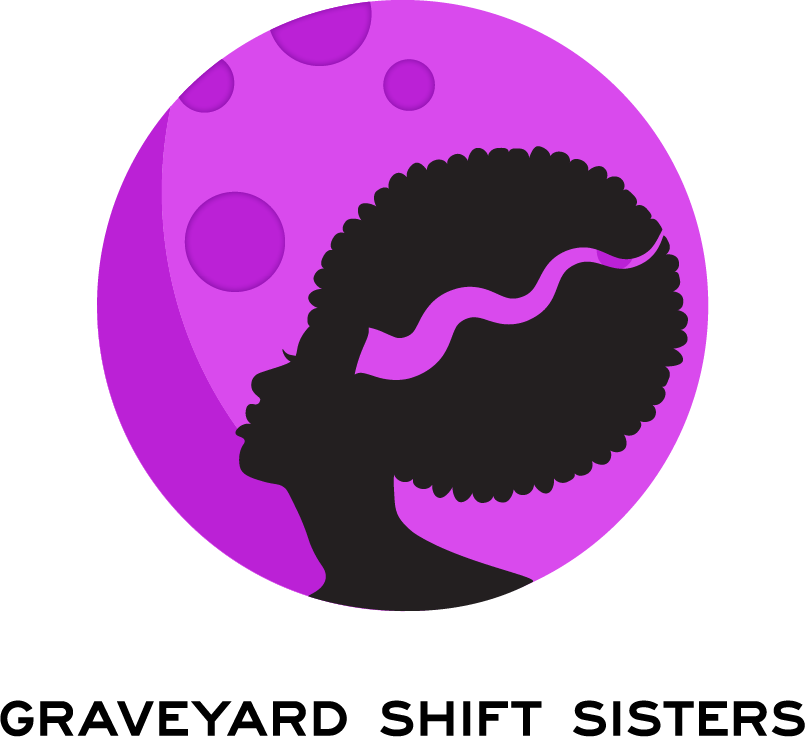Looking Back & Hoping Forward: Candyman
Candyman has been a delicate enigma, a tale, a very tepid preoccupation of mine since I was ten. It began with the gold glare of the sun through my mother’s bedroom window. Her often condensed space, accentuated by the imposing almost Beetlejuice-inspired black furniture, stationary yet bustling clutter; both new acquisitions and relics from a time before me. And her “bulbous” television as she would call the appliance, positioned central in her reliance on its distractions from her ever 40+ hour work weeks and (even with the father of her two youngest in the apartment), raising three children on her own. It faced her queen-size, perched on a dresser-storage hybrid. Likely, the time was Fall, possibly a video store rental. Sure, no one’s around, I’ll watch Candyman, why not. I had been watching films like Hellraiser since I was about six.
There’s no nostalgic, revelatory crescendo here. No jolt, no moment of sublime. Candyman for a Black girl of a certain age during its second release for home viewing, fell into a thankless vault. The impact may have initially seemed minimal, but I’ve found it had left a permanency on my quest as a student at the intersections of Black people, Black cinema, and horror as a film genre. Unearthing history, going back to make sense of yesterday today; finding more, and doing more with it in order to discover an even richer morsel. A key to further enlightenment. It reminds me very much of Sankofa.
Sankofa is but the posture of a bird turning to reach for an egg perched on its back. It is a symbol used by the Ghanaian Akan people, meaning to reach back for knowledge in order to move forward. A scrupulous and culturally fitting approach to bringing the titular Candyman into today’s horror consciousness for reminiscent and unfamiliar audiences. This seems very accurate to the buzz about this “spiritual sequel” or rather, spiritual reawakening.
Co-writers Win Rosenfeld, Jordan Peele, and Nia DaCosta (doubling her bill as director) reached back for the un- or underexplored debris in the 1992 classic and found a force. How does this folktale’s echo rumble between the walls of abandoned churches, diseased concrete, the fragile minds of wiser adults and reckless youths?
Debates will always arouse the bigger ideas if remakes, re-imaginings, reboots, and sequels are even necessary. I suppose the simplest answer is, they aren’t. But they do provide a multitude of blueprints and blank canvases to explore an array of alternative time and blood lines. Maybe accidental space exploration. Sometimes this is successful, obviously. Other times, not so much.
But with a bland, three-film parch, the soul of Daniel Robitaille is restless.
Candyman began as a short story penned by English author Clive Barker titled, “The Forbidden” from his 1985 Books of Blood, Vol. 5. Birthed from stories told to him about a hook-handed killer and serial mutilator, the story uses physical space to highlight the inhumane treatment of the lower and impoverished class in a decaying Liverpool housing estate. What we in the States call, the projects.
The consistently referenced film, came about during an era of what many reference as a horror cinema lull. The interest and momentum for horror’s big franchises came to a halt and the MPAA was harder on the genre than ever. Horror seemed to crawl into a proverbial crypt of sorts, morphing into the more palatable psychological thriller thunderclap via The Silence of the Lambs (1991). In another corner of Hollywood, an immersive, topical renaissance rose from the blaxploitation ashes. Spike Lee’s Do the Right Thing (1989) and Reginald Hudlin’s House Party (1990) upon critical and financial success, ushered what was to come for black directors and black characters on the big screen for the rest of the decade.
Candyman was a kismet collision, bridging the two film universes that I don’t feel audiences were quite prepared for. A new generation of Black children I learned (DaCosta herself expressing a once obsession in her youth), were floored by his centrality. Never before has horror witnessed an intentional black apparitic terror; those who nod to his power survive through fear, while straight trolling reigns on those who do not. The latter, coming in the form of Helen Lyle (Virginia Madsen), a graduate school student in Chicago whose thesis concerns urban legends. The proximity of the one about Candyman makes it a perfect case study. As she moves in indisputably dangerous spaces with frustrating naivety and enraging privilege to unmyth the myth, her disbelief marks her as a fateful successor.
The optics are glaring; a white woman investigating a folklore both black and American, held with reverence in a poor and crime-ridden space by the Black people who live in it. The story was never about the title character. Not really. It all read like the Home Boy Sapien sketch from In Living Color. Even as a kid watching this for the first time in 1993-ish, I recoiled from Helen’s framing and other non-white characters I felt, even then, were intended to be her white guilt, lab specimens.
It is, and feels essentially, about “the wrongness of a woman who uses her racial and class privilege to traverse into forbidden spaces,” writer Angela Englert very accurately asserts. She articulates every crevice and dent of Helen Lyle’s arc that has and continues to grate on my last nerve about this narrative. “She is a real Karen of a heroine. The way that she marches into the projects…shielded by pluck and confidence while her Black Best Friend cringes, the way she immediately, comfortably takes charge when helping Anne-Marie with her baby while in her apartment for the very first time, the way that she tries to assert authority and control in any situation, including when she’s being questioned under suspicion of murder: at all times, Helen has real ‘I want to speak to your manager’ energy.” My frustration always sulked in that privileged pivot. I was once inarticulate, yet forever intuitive. Sitting on my Mommy’s bed in front of her television, predicting that this blonde would totally be full of shit.
But as a natural process of growth came, so did the words, diplomacy, and consideration for what Madsen’s performance suggests. A recent awakening in my understanding of the function of this work looks into the film’s residents of Cabrini Green. They reverence Candyman by fearing him. If an interloper investigates in an attempt to neutralize that fear by being absolute in her skepticism, then Candyman shows up after her mocking of his summoning to wreak havoc on her life. A severed dog head here, a mutilated hospital worker there, all because she tried to gaslight a group of Black people in the know. They don’t (and we shouldn’t) forget his origin of racialized violence, a poltergeist created by white supremacy. Helen is erasing a very real legacy with her racial identity and supposed intellectual superiority. Candyman’s clapback that completely destabilizes her comfortable place in society, turning her into the very thing she may think she doesn’t represent; a threat that imposes herself on the lives of others that results in perilous harm. How very Karen of her, indeed.
And I realized that this is what makes the 1992 film so delightfully brilliant.
While an incredibly chilling, competent feature, Candyman footnotes both its namesake and potentially more interesting characters. Somewhere at the surface of the timeless tale was always a richer story about Mr. Robitaille’s legacy, and the reverberations experienced by his communal descendants.
Jordan Peele has been building an empire of creative output on a theme of reclaiming a legacy of Black American interest and labor in the speculative sphere. His humble debut as a screenwriter and director, Get Out made such a massive imprint, he has impressively seized open opportunities to position new and not-so-new talent for the creative spotlight. Him and his teams have revived and revised existing properties to centralize their nature of exposing the matters of race and its intersections in the United States. Peele’s mission is grand, and there’s no denying his passion and sincerity. And if Peele is the master at anything, its unearthing those missing puzzle pieces and finding a place for them. Candyman has always been missing… something. And Peele may have filled in the blank.
His Monkeypaw Productions gave Candyman the sequel treatment any criticism of the original film may have asked for. Monkeypaw Creative Director Ian Cooper discussed very early on the importance the team feels to provide an additional storyline to the canon while staying true to the principles of what made it initially successful. This is no easy feat in a everybody’s-a-critic digital age. The addressing “toxic fandom” point was made in early Summer 2019 reports. We are a culture that can be unreasonable when it comes to revisiting older properties. A complete dismissal of the very concept without considering how new players in the present may interact with an iconic presence.
For Candyman, a cinematic story rooted in United States race relations, folklore, and gentrification is timeless. Cooper expressed that Peele (along with Rosenfeld) in Peele fashion will bring his “mischievous” creative voice to the new story. With a resume packed with incisive competency, it’s incredibly easy to relax in the passenger seat while he puts many of us in the therapy chair.
The response from potentially interested parties has by observation appeared, even. No shaking a fist at the audacity and no Black Twitter hashtags generated (yet). Tony Todd, the OG title performer has been involved in production. Mullings about a Chicago-based art dealer obsessed with the Candyman legend. And the texture, landscape, and locale of where (now gentrified) Cabrini Green once was today.
Writer Dani BeThea comments extensively on the release of the Candyman 2020 trailer, shifting focus a bit from Candyman as ‘the monster’ and more towards a villain that looms all around us: gentrification. The demolition and displacement of about 15,000 residents of Cabrini Green, BeThea articulates, “the Cabrini Green of the newest film shows an area infiltrated by wealthy millennials and a bourgeois art scene that grossly revels in the mythology of Candyman and the commodification of Black historical trauma… As gentrification continues in places like Chicago and across the country, this film represents an encroaching modern-day horror that transforms everything it touches. It’s sobering that words that once inspired fear for generations are now cathartic.” Candyman is groaning, a vibration between each and every crevice layed in each setting teased, to be delivered from the trap beneath Lyle’s protagonist throne. And Anthony McCoy (Yahya Abdul-Mateen II) very well may be his usher.
On June 17, 2020, director Nia DaCosta tweeted, “CANDYMAN, at the intersection of white violence and black pain, is about unwilling martyrs. The people they were, the symbols we turn them into, the monsters we are told they must have been.” There are inklings that suggest this is the union of the title character and the adult McCoy. From one artist to another, stepping into his dimension to unmyth misconceptions, maybe. To right of the wrong in just telling a more fleshed out story that I would hope is as complex as the human experience is. Candyman 2021, for me, doesn’t have to be neat, and it damn sure better not be safe. This prognostication of course, I unfortunately cannot unwrap and play with until this film’s cinema Christmas. And just like when I was ten, I’ve been having restless nights anticipating the day I get to see what doors this film will close behind me, walking towards the congregation to embrace the nameless and underdeveloped from before, left as a whisper (let’s have a Florida Evans ‘damn’ moment for Bernadette… again), blossomed into the voiceful, loud yet tired… probably of Helen’s pervasive mediocrity.

